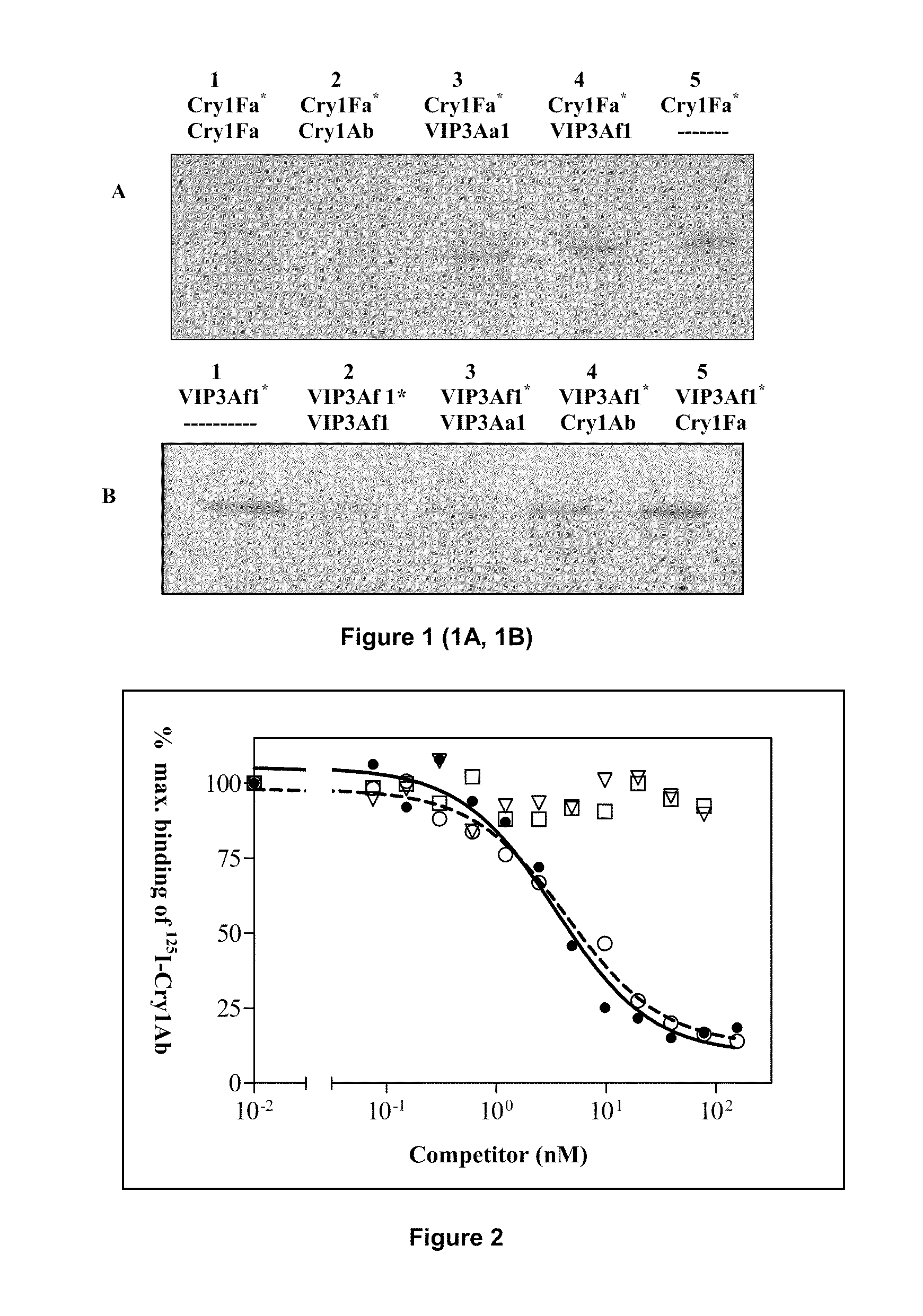Armyworm Insect Resistance Management in Transgenic Plants
a technology of transgenic plants and armyworms, applied in the field of plant pest control, can solve the problems of large economic losses, threat of yield losses, and the development of insect resistance to plant-incorporated insecticidal proteins such as b. thuringiensis /i>proteins has not evolved rapidly, so as to prevent or delay the development of insect resistan
- Summary
- Abstract
- Description
- Claims
- Application Information
AI Technical Summary
Benefits of technology
Problems solved by technology
Method used
Image
Examples
example 1
1. Materials and Methods
Preparation of Toxins
[0107]The Cry toxins Cry1Ab and Cry1Fa were obtained from recombinant Bt strains expressing a single toxin. The strains were grown for 48 hours in CCY medium (Stewart et al 1981) supplemented with the appropriate antibiotics. Spores and crystals were collected by centrifugation at 9700×g for 10 min at 4° C. The pellet was washed 4 times with 1 M NaCl / 10 mM EDTA and was resuspended in 10 mM KCl and solubilized in 50 mM Na2CO3 (pH 10.5) including 10 mM DTT. The toxins were activated with trypsin and purified by anion exchange chromatography (Sayyed et al., 2000). The protein concentration was measured using the Bradford method (Bradford, 1976).
Subcloning of the VIP3Aa1 Gene.
[0108]The VIP toxins used in this study were VIP3Af1 (NCBI accession CAI43275) and VIP3Aa1 (NCBI accession AAC37036). The corresponding genes had been cloned in plasmids pNN814 and pGA85, respectively, and were present in E. coli strain WK6. The E. coli strain containing...
example 2
[0126]Several procedures can be envisaged for obtaining the combined expression of two insecticidal protein genes, such as the VIP3A and cry1F or cry1Ab genes in transgenic plants, such as corn or cotton plants.
[0127]A first procedure is based on sequential transformation steps in which a plant, already transformed with a first chimeric gene, is retransformed in order to introduce a second gene. The sequential transformation preferably makes use of two different selectable marker genes, such as the resistance genes for kanamycin and phosphinotricin acetyl transferase (e.g., the well known pat or bar genes), which confers resistance to glufosinate herbicides. The use of both these selectable markers has been described in De Block et al. (1987).
[0128]The second procedure is based on the cotransformation of two chimeric genes encoding different insecticidal proteins on different plasmids in a single step. The integration of both genes can be selected by making use of the selectable mar...
PUM
| Property | Measurement | Unit |
|---|---|---|
| temperature | aaaaa | aaaaa |
| size | aaaaa | aaaaa |
| size | aaaaa | aaaaa |
Abstract
Description
Claims
Application Information
 Login to View More
Login to View More - R&D
- Intellectual Property
- Life Sciences
- Materials
- Tech Scout
- Unparalleled Data Quality
- Higher Quality Content
- 60% Fewer Hallucinations
Browse by: Latest US Patents, China's latest patents, Technical Efficacy Thesaurus, Application Domain, Technology Topic, Popular Technical Reports.
© 2025 PatSnap. All rights reserved.Legal|Privacy policy|Modern Slavery Act Transparency Statement|Sitemap|About US| Contact US: help@patsnap.com

